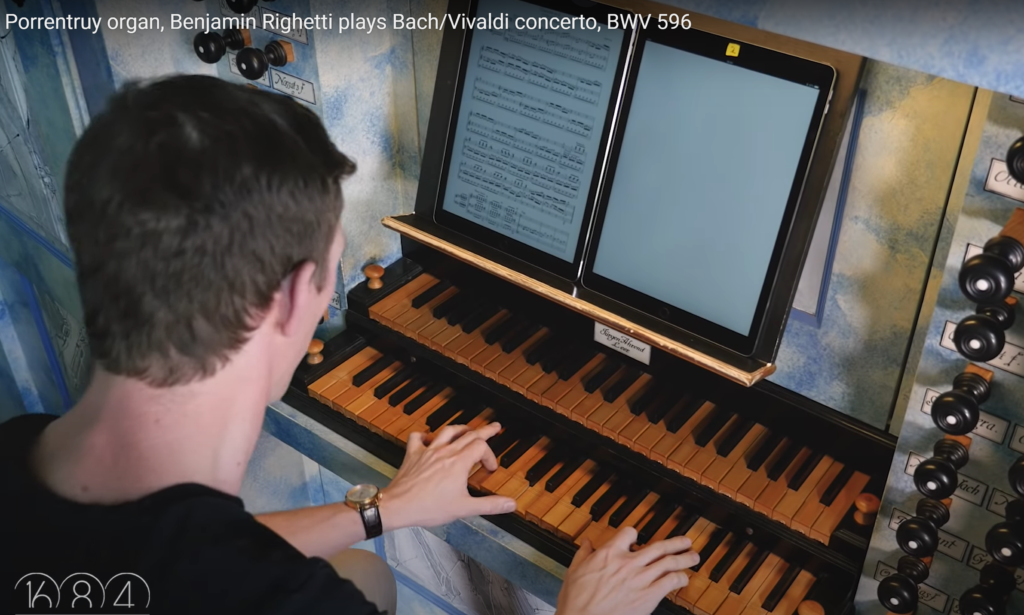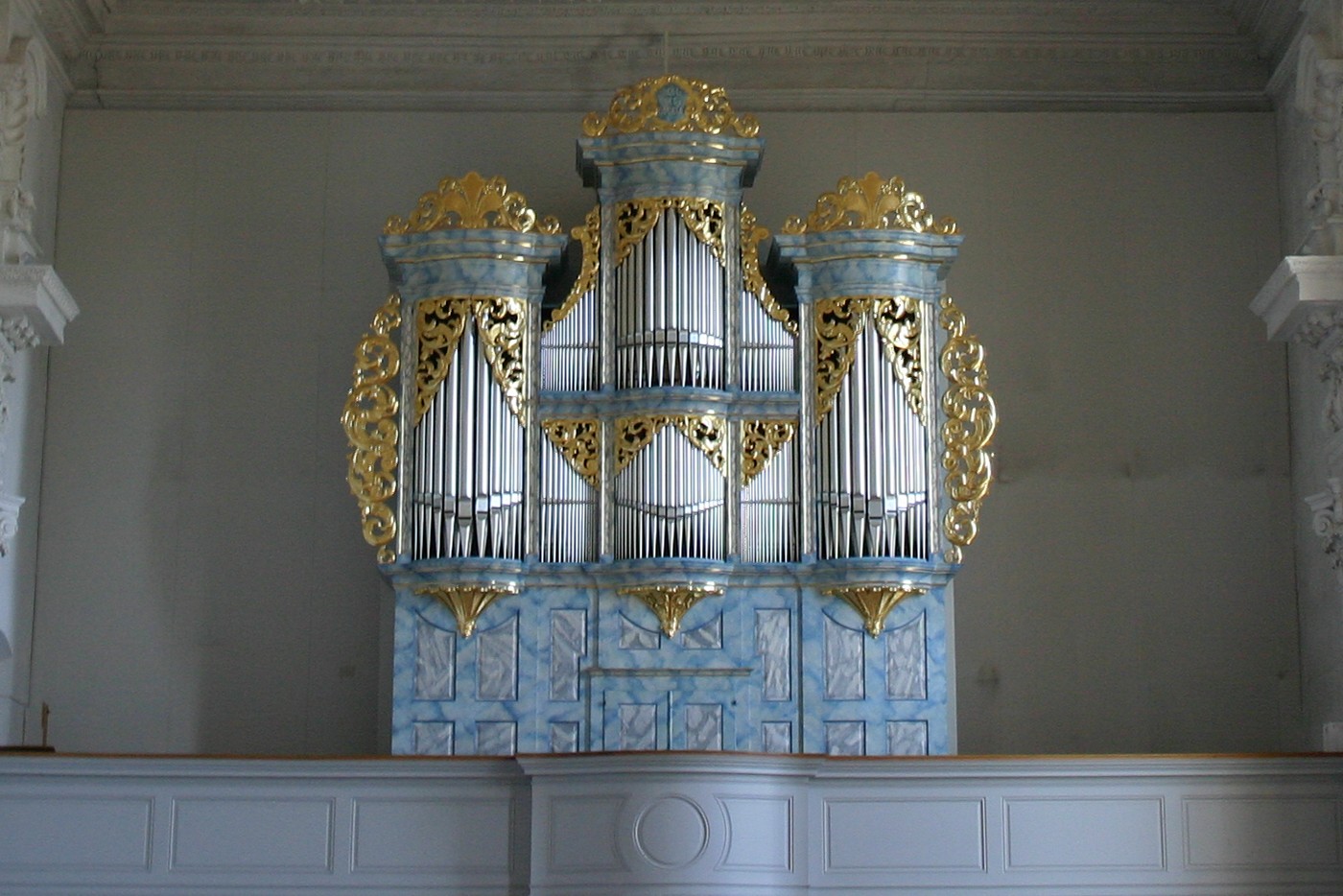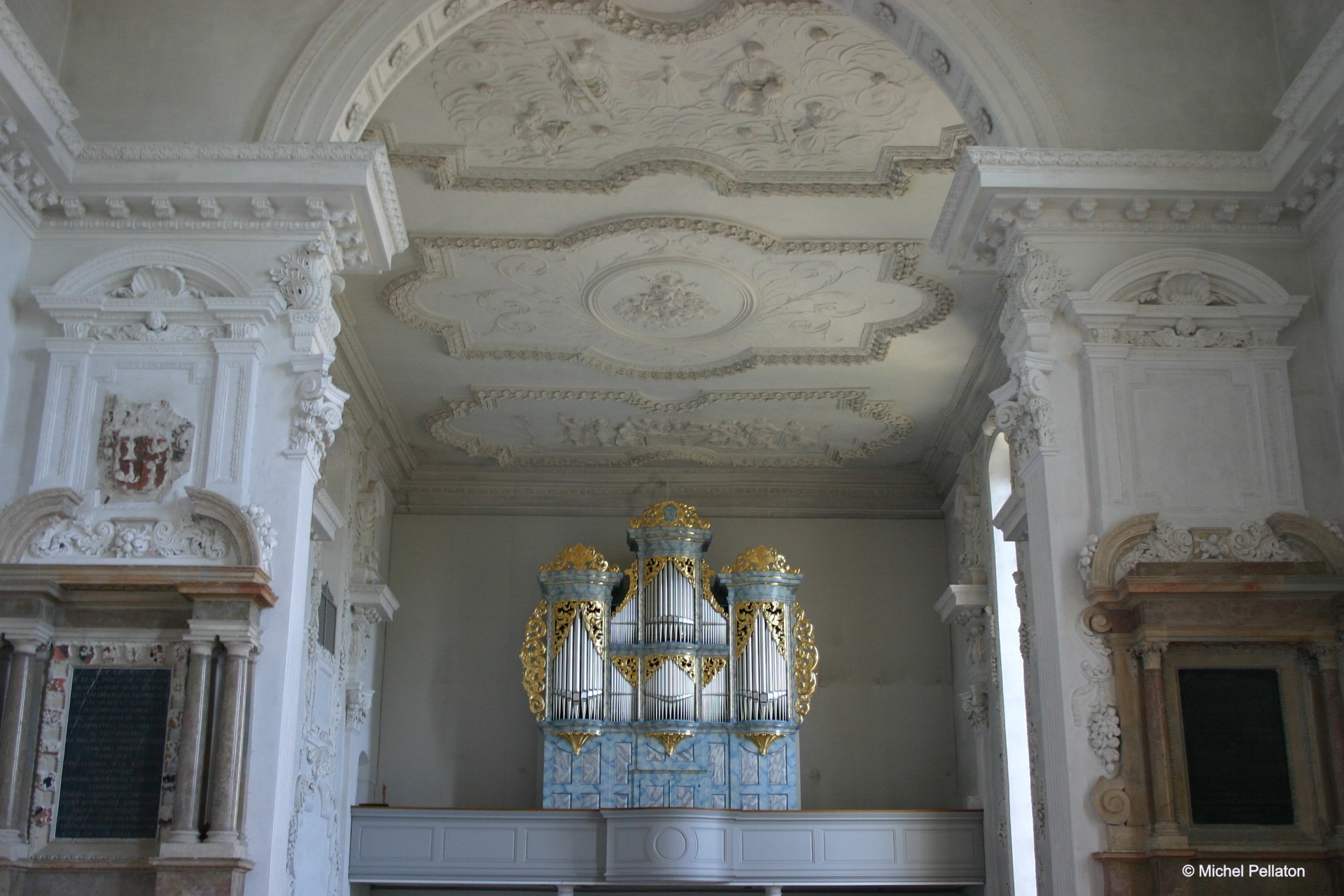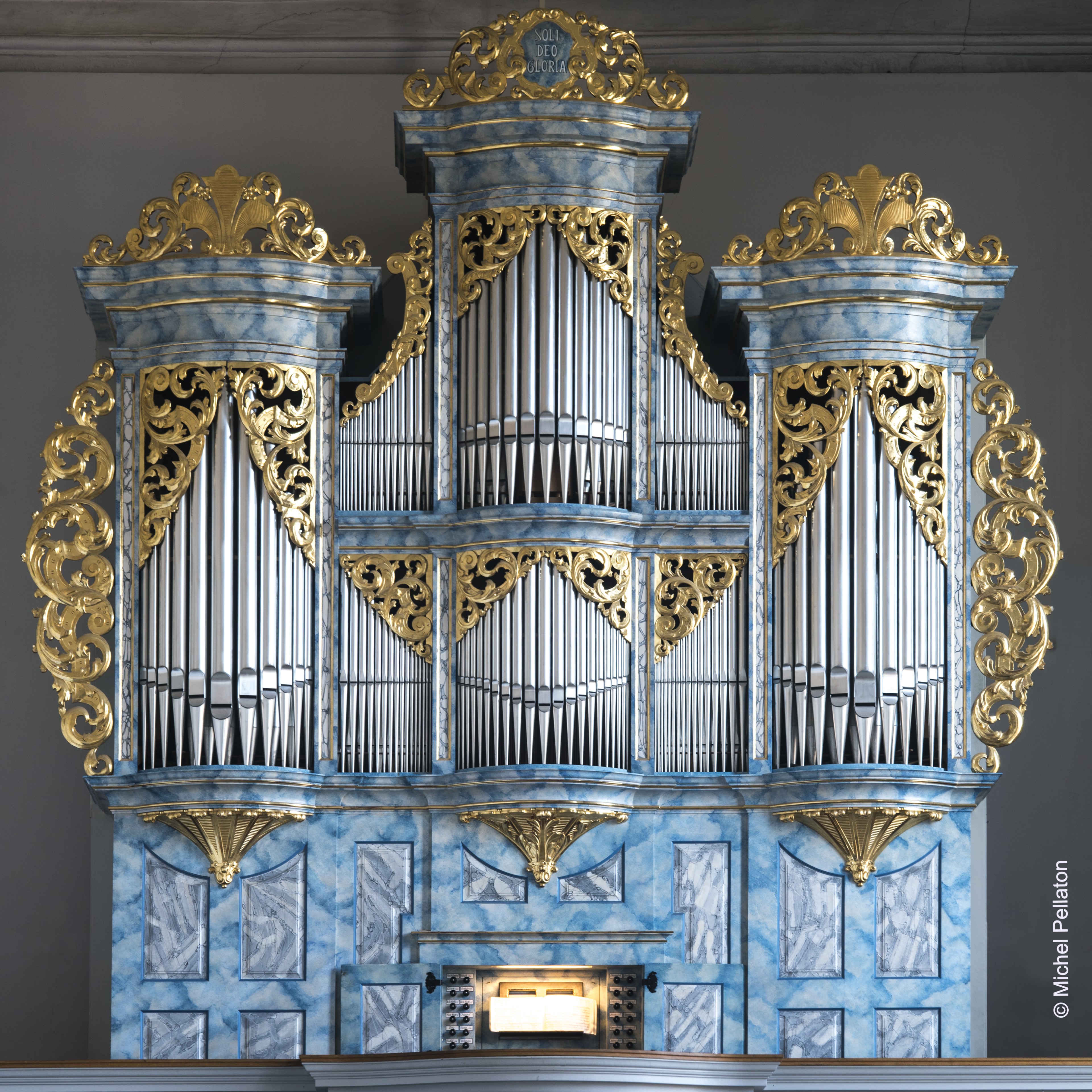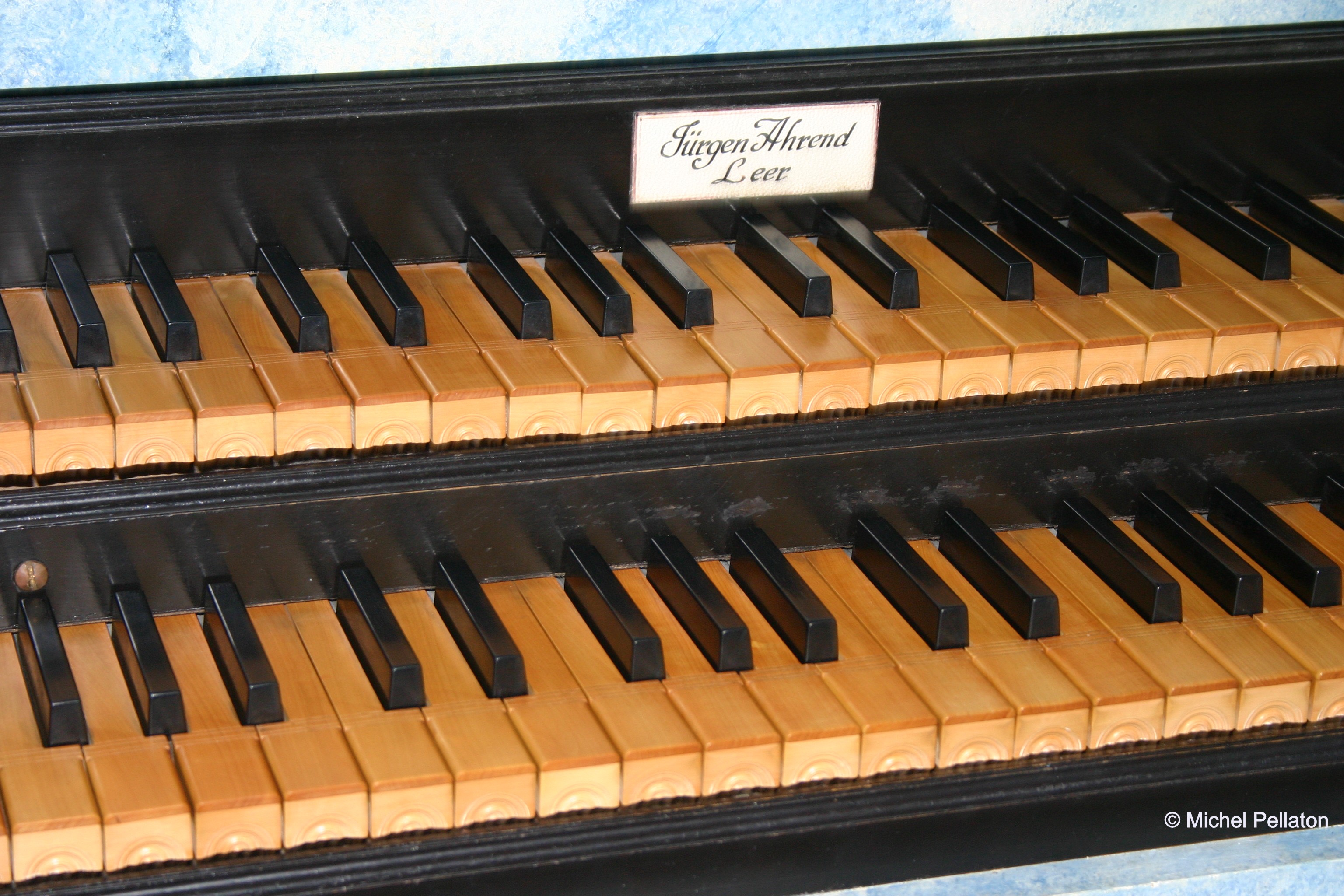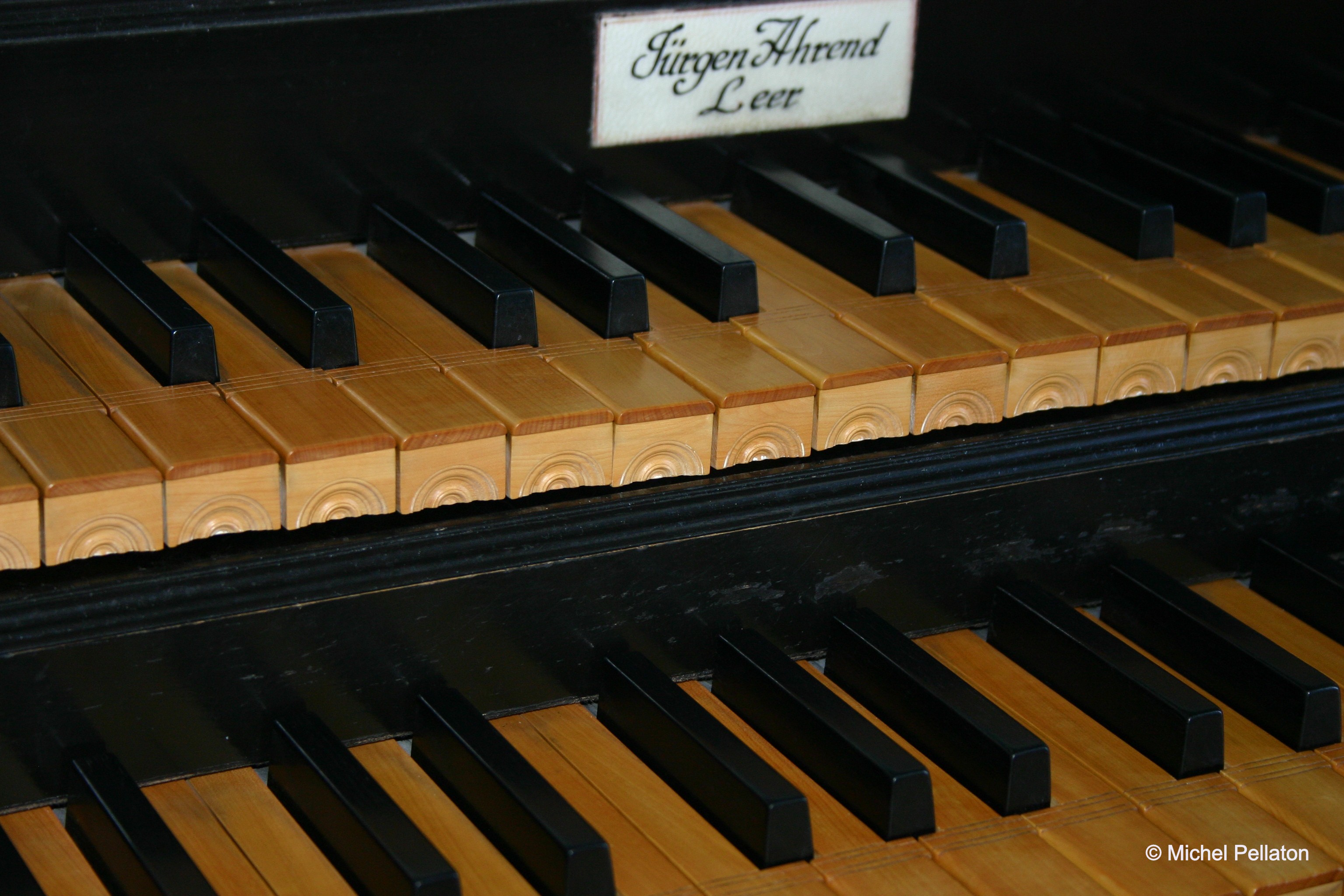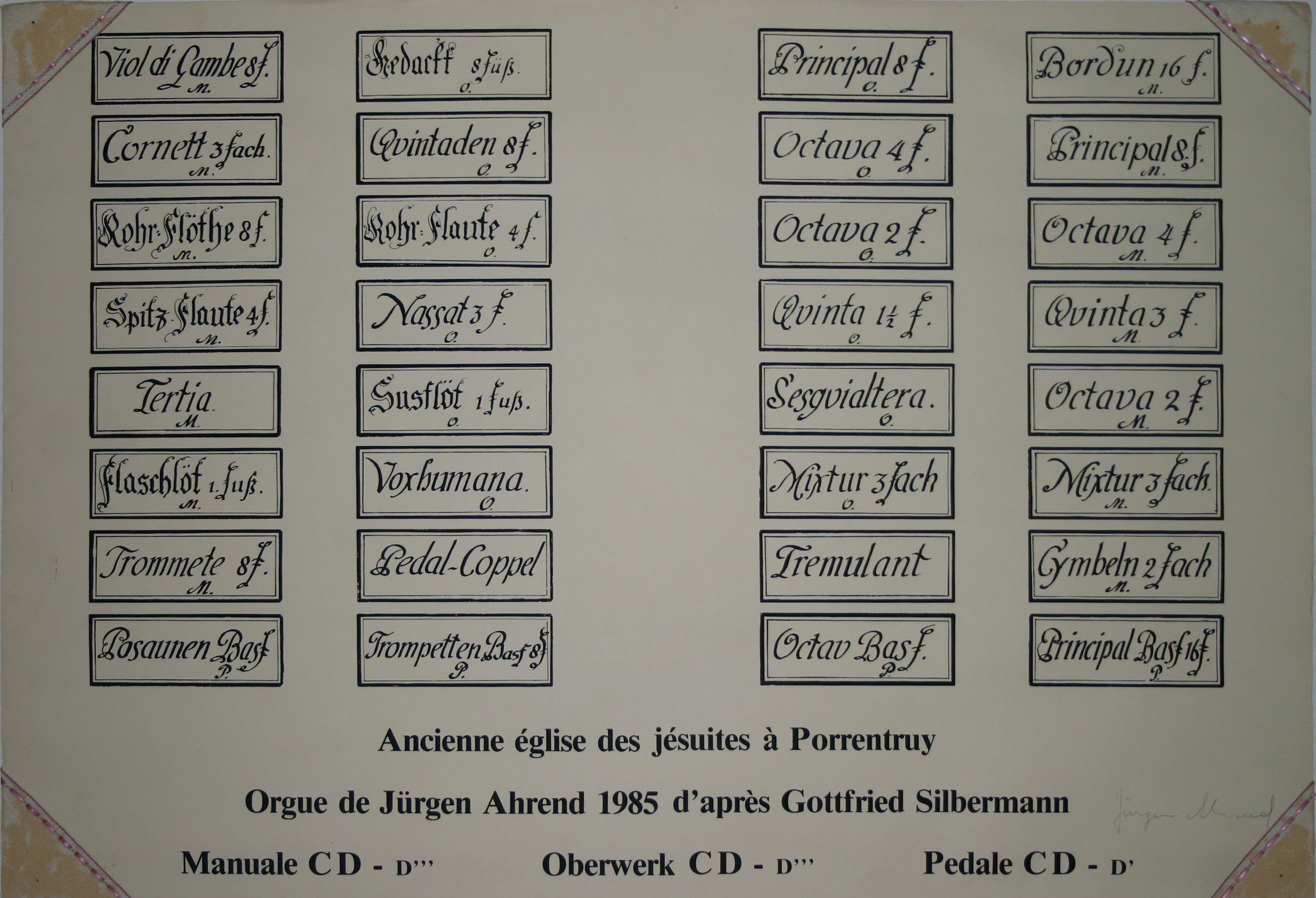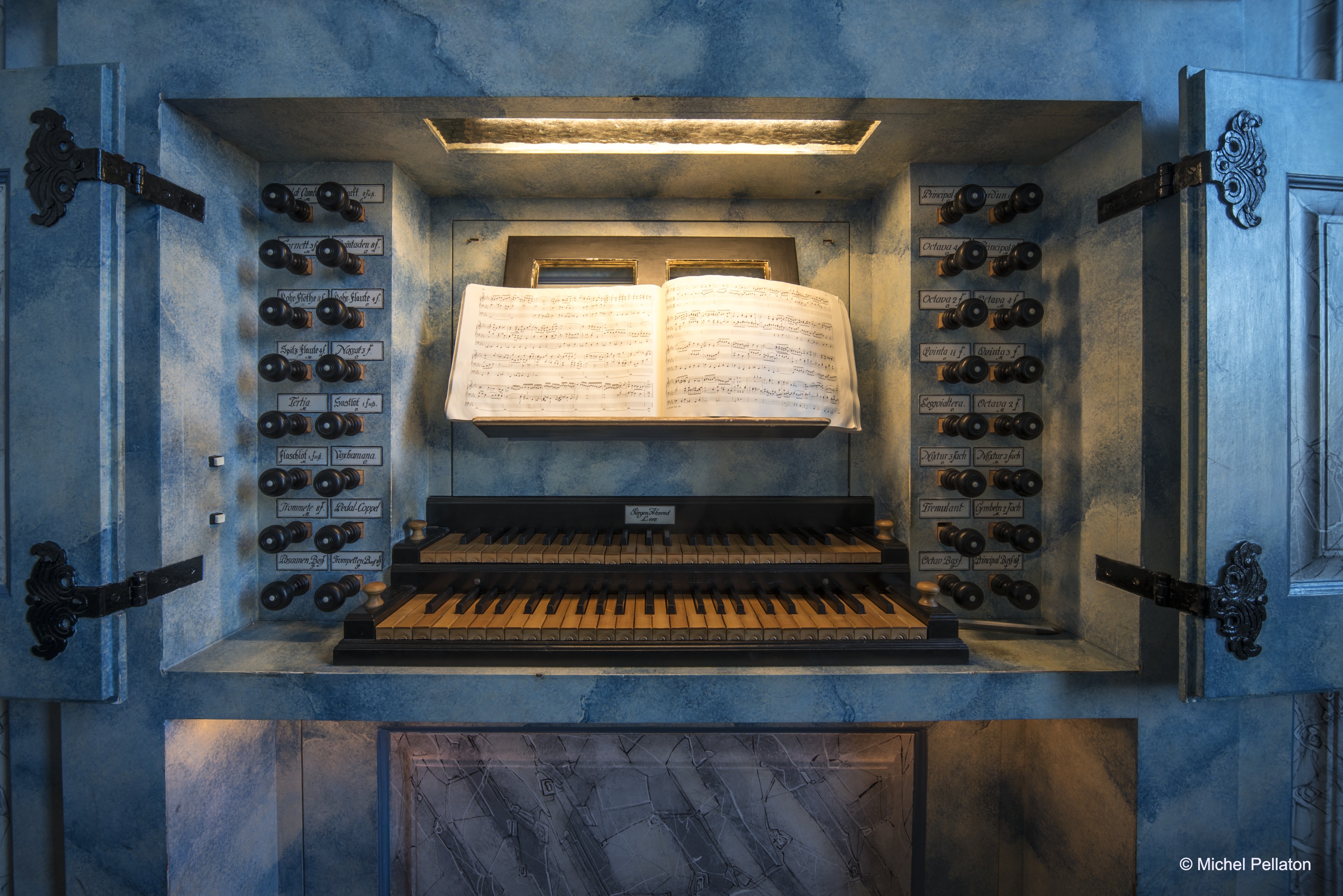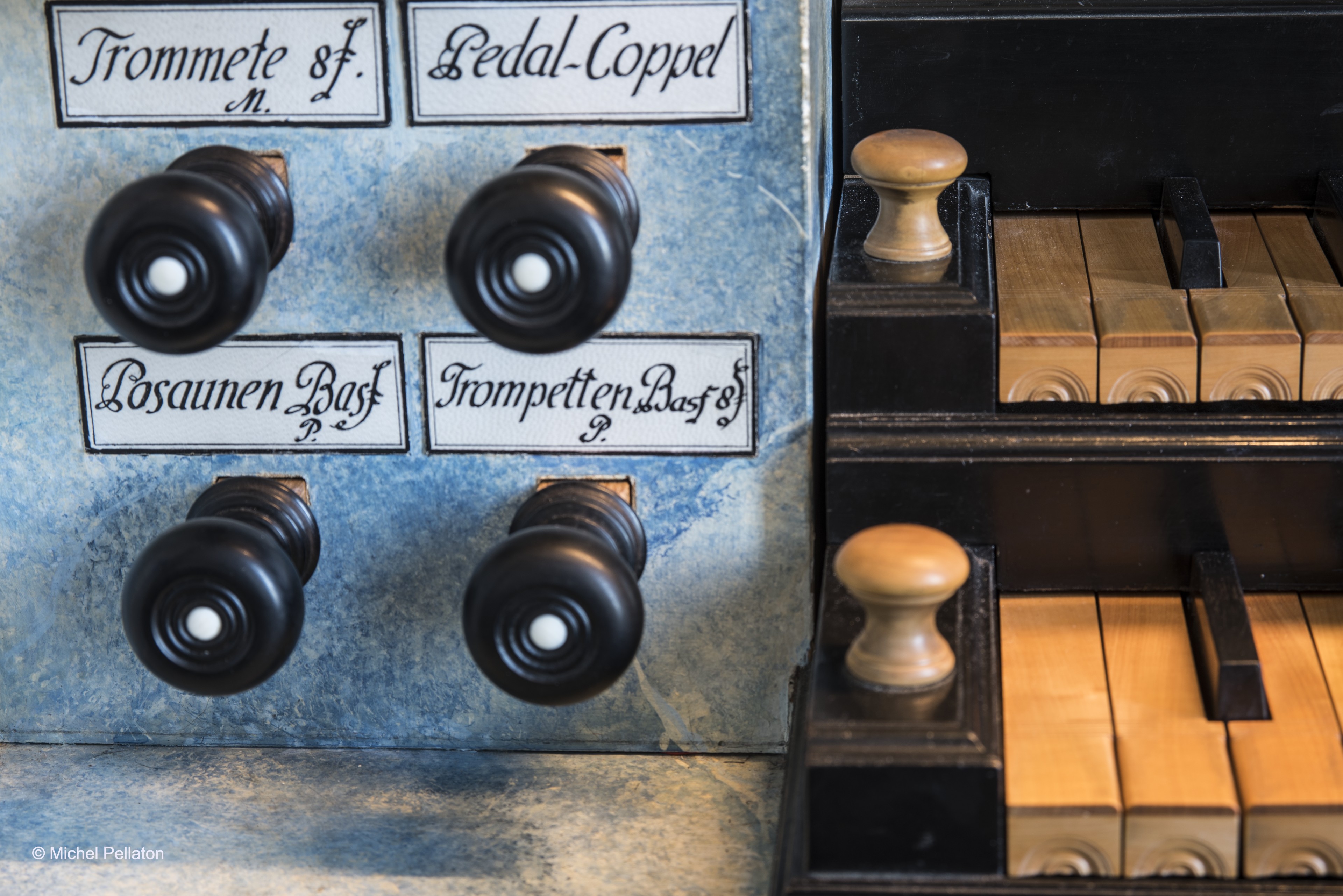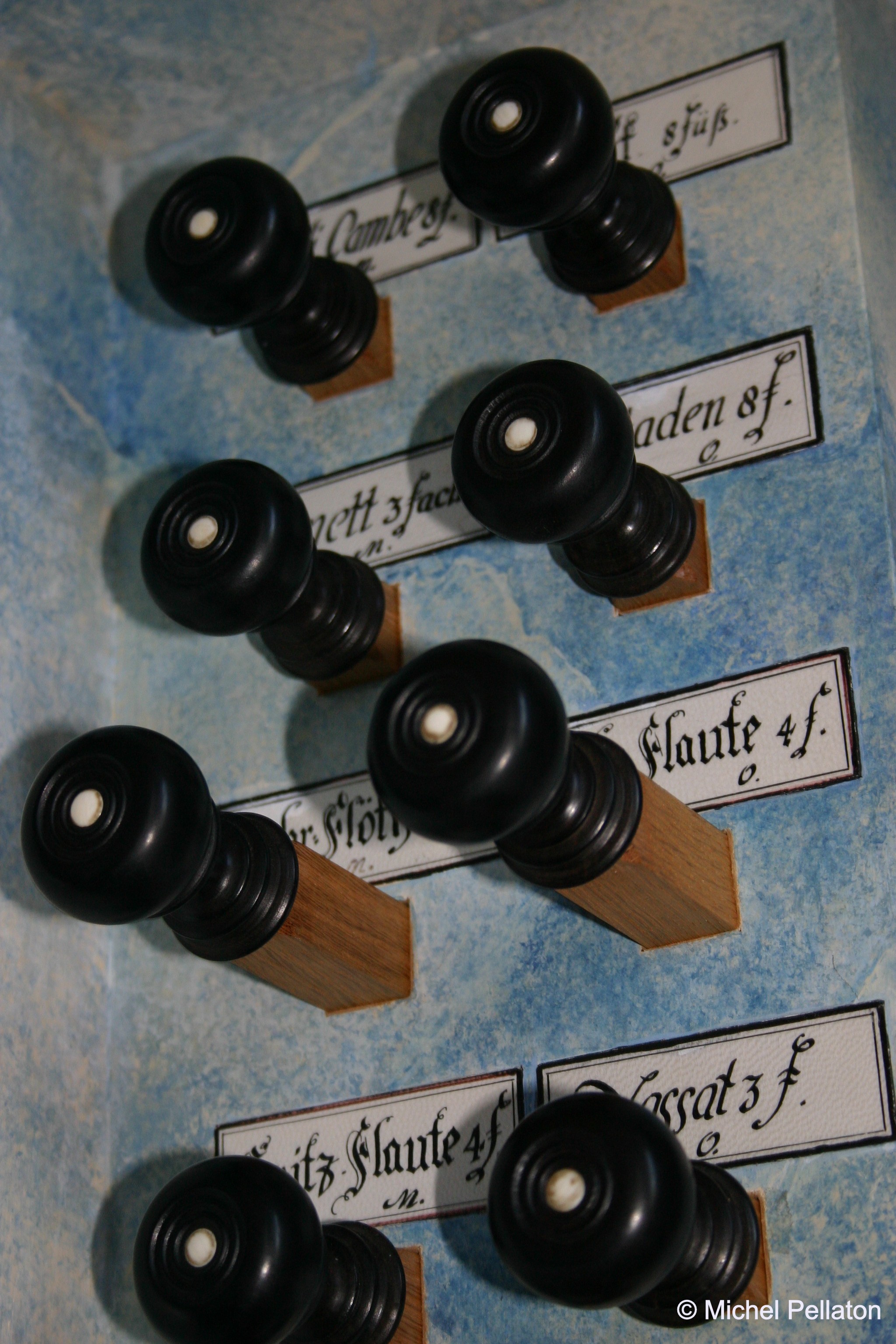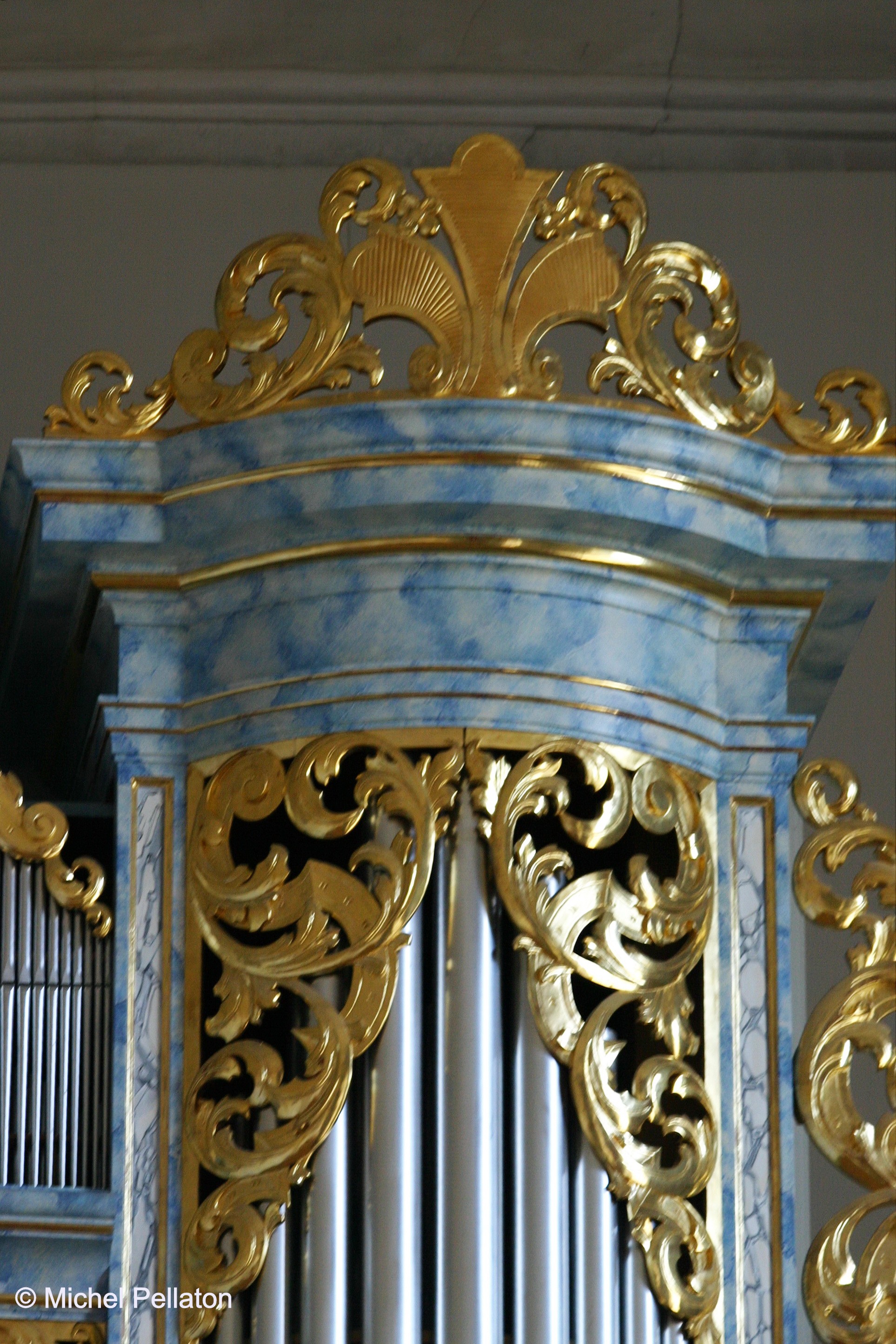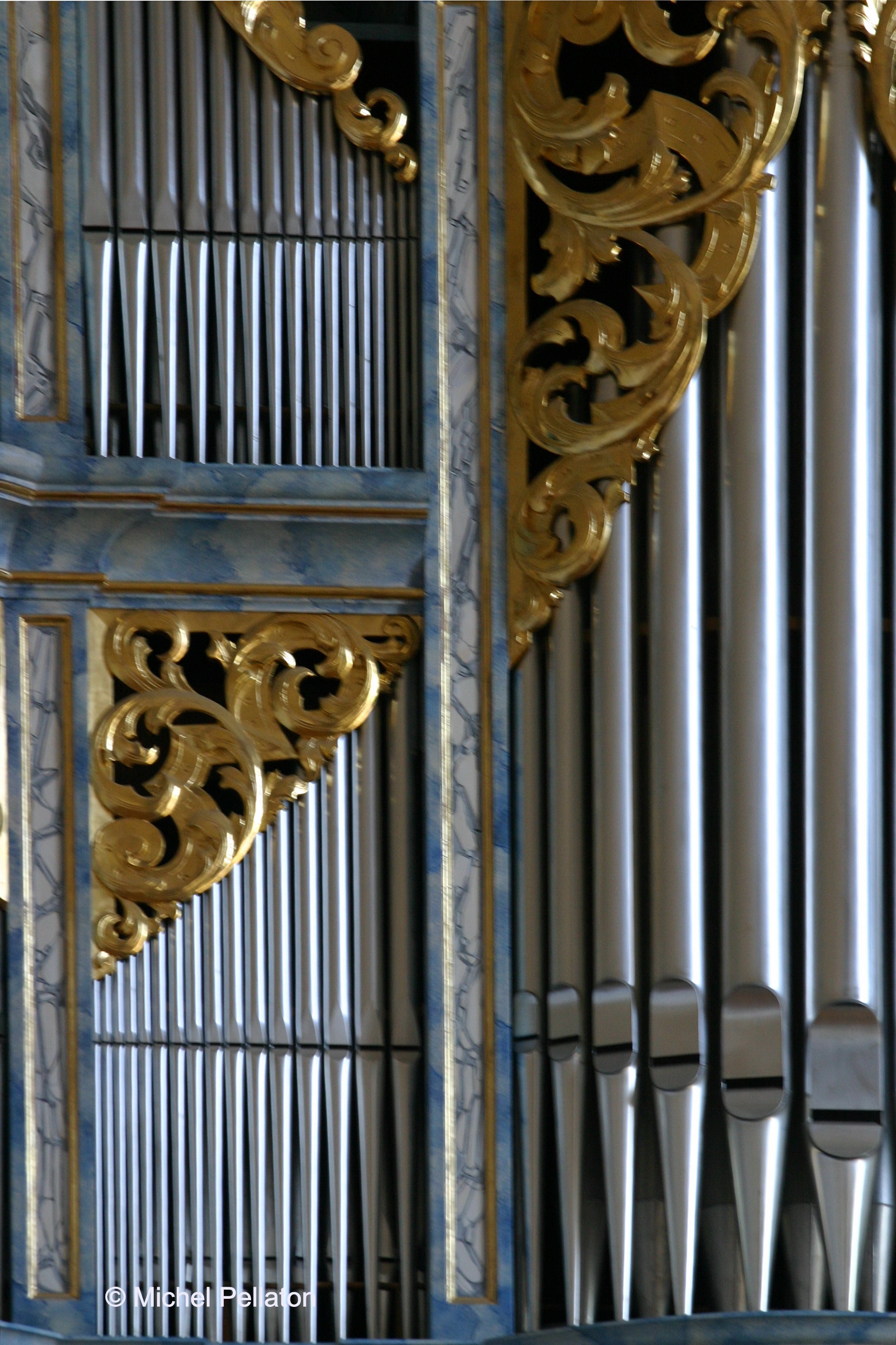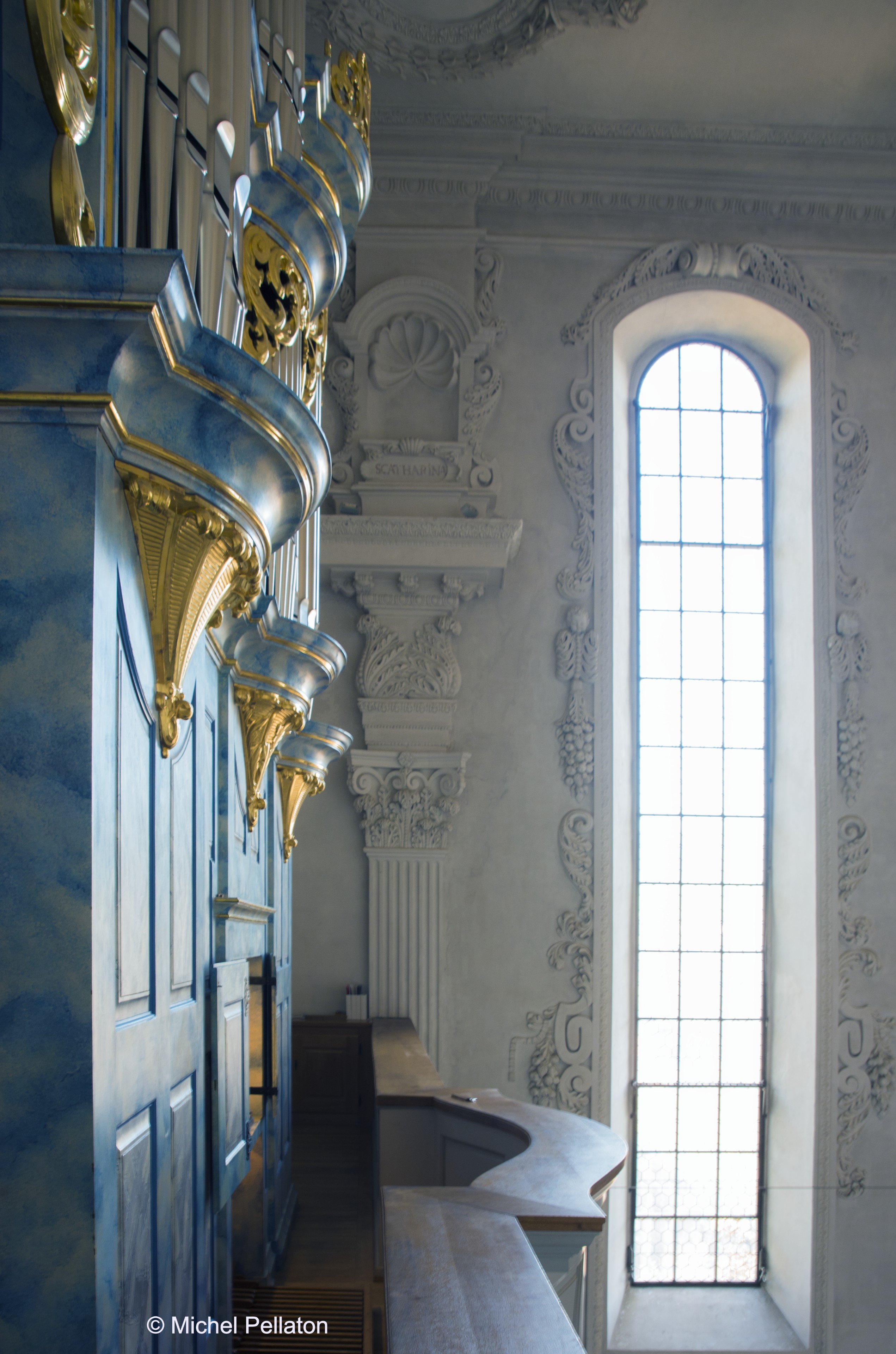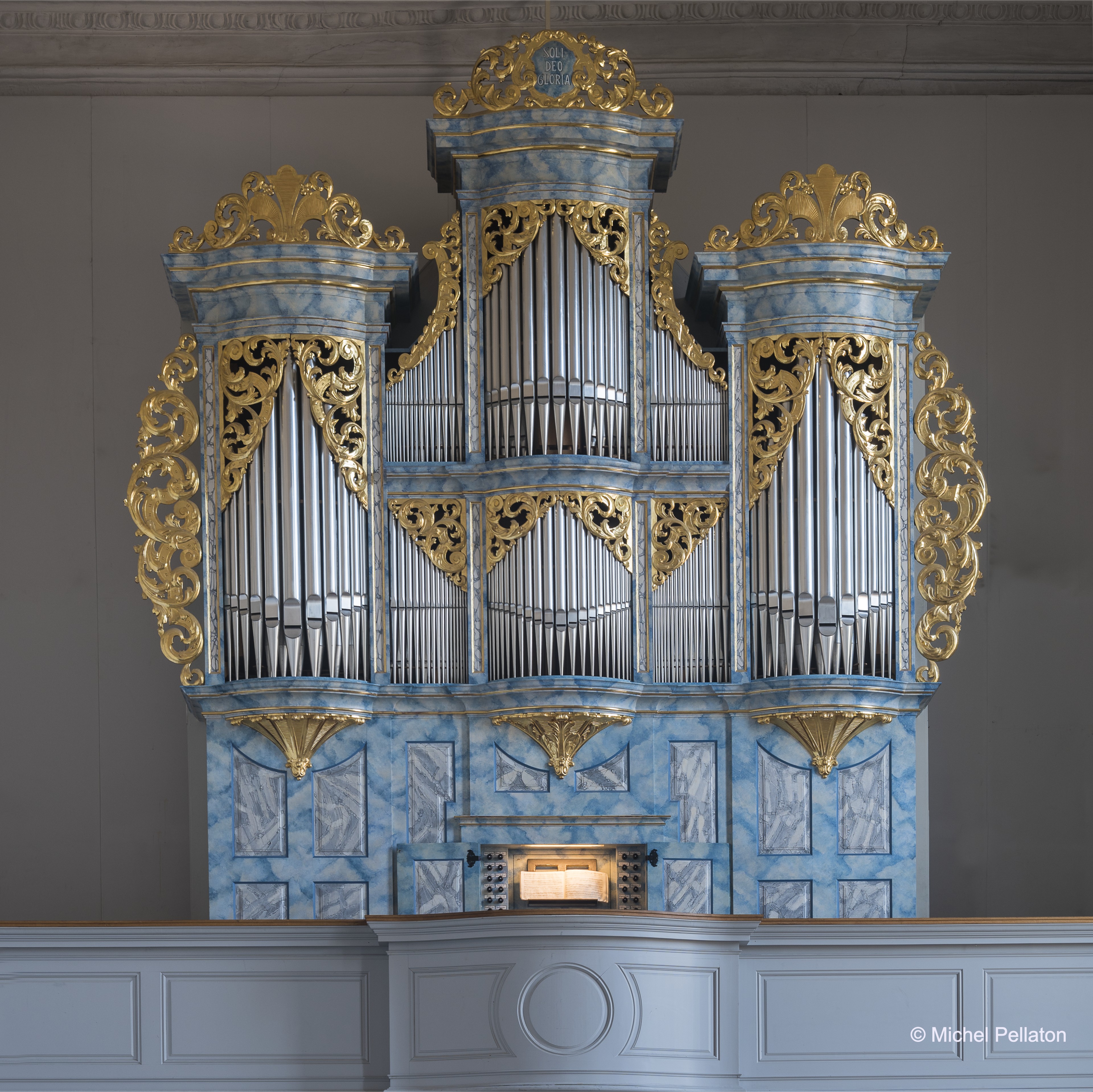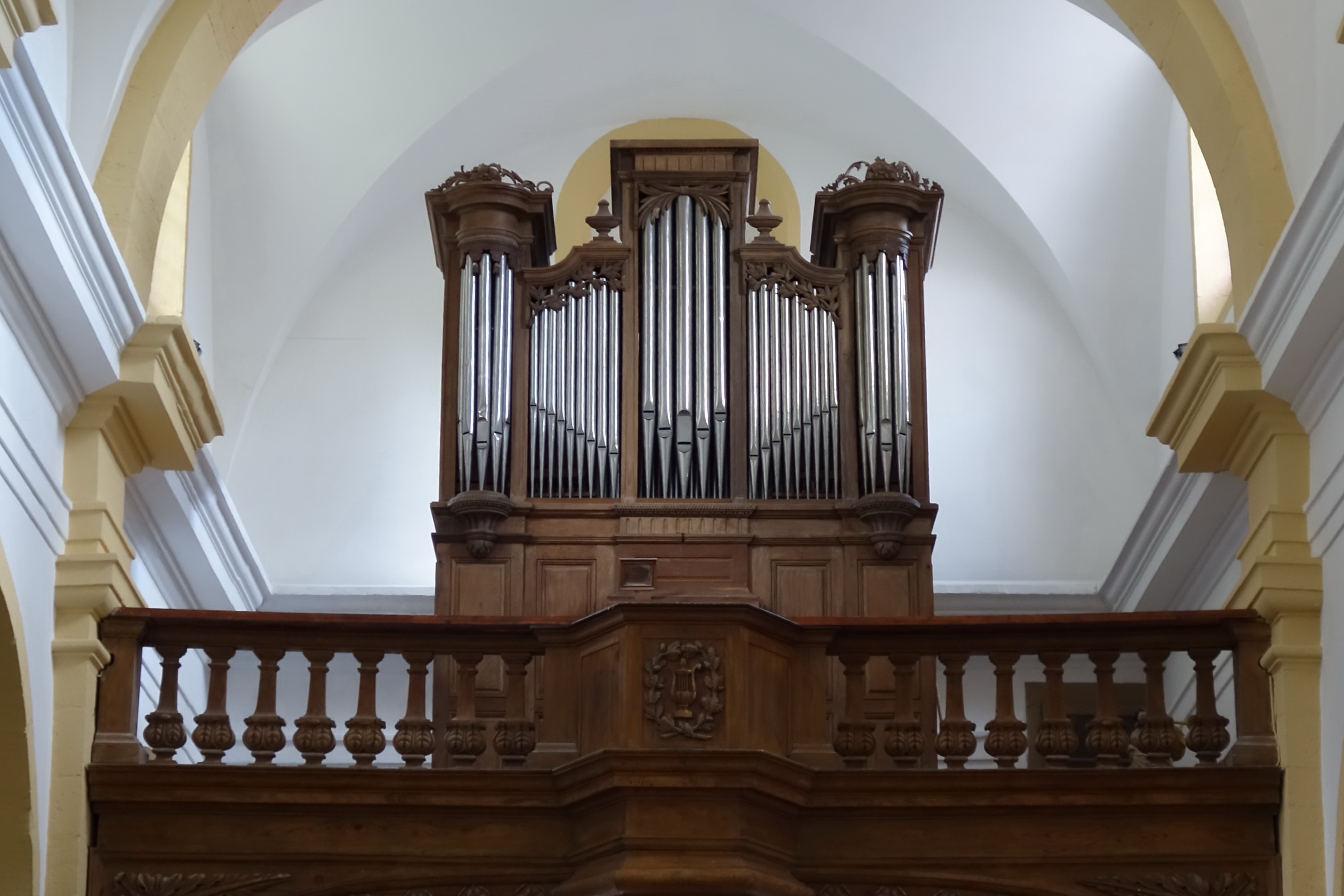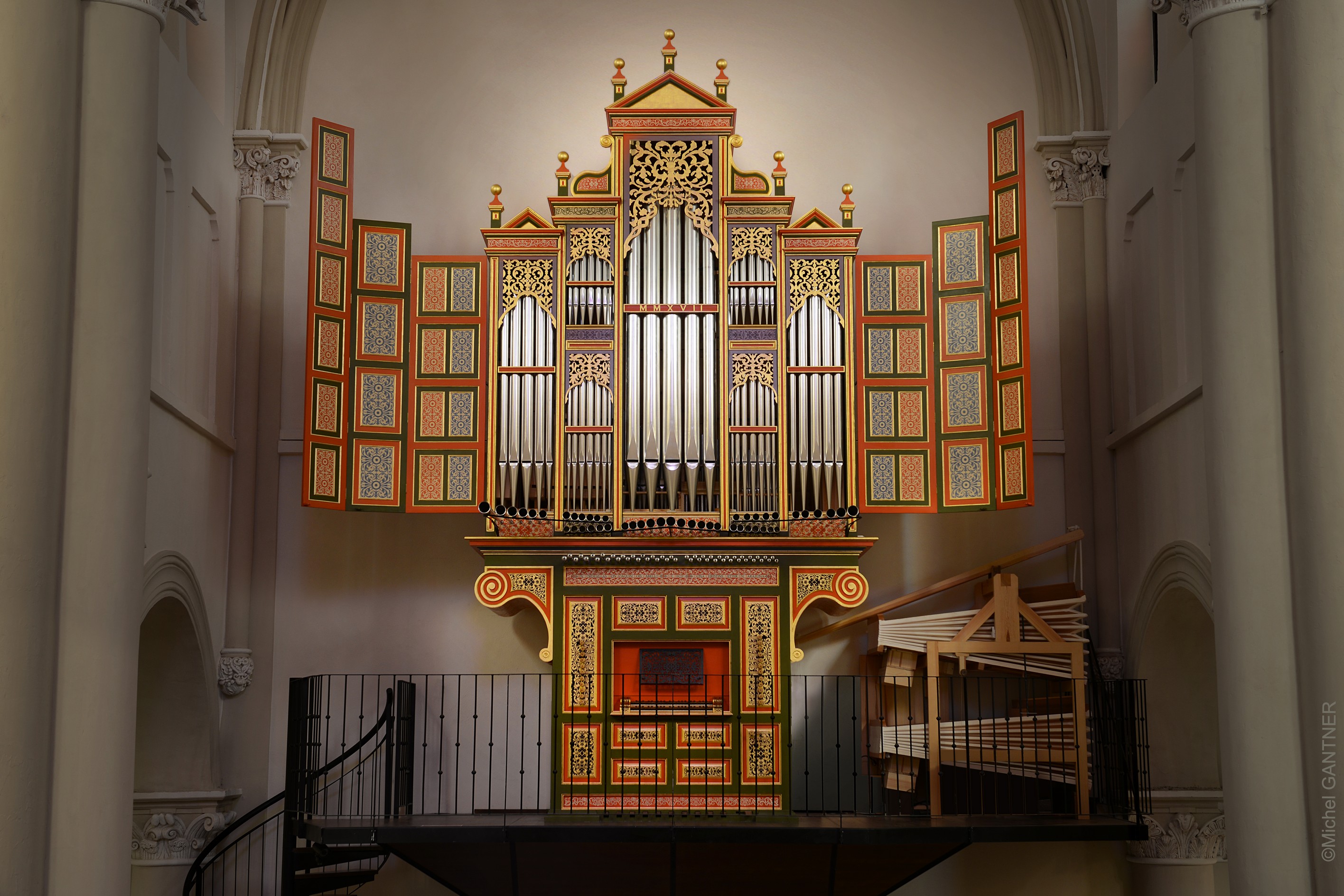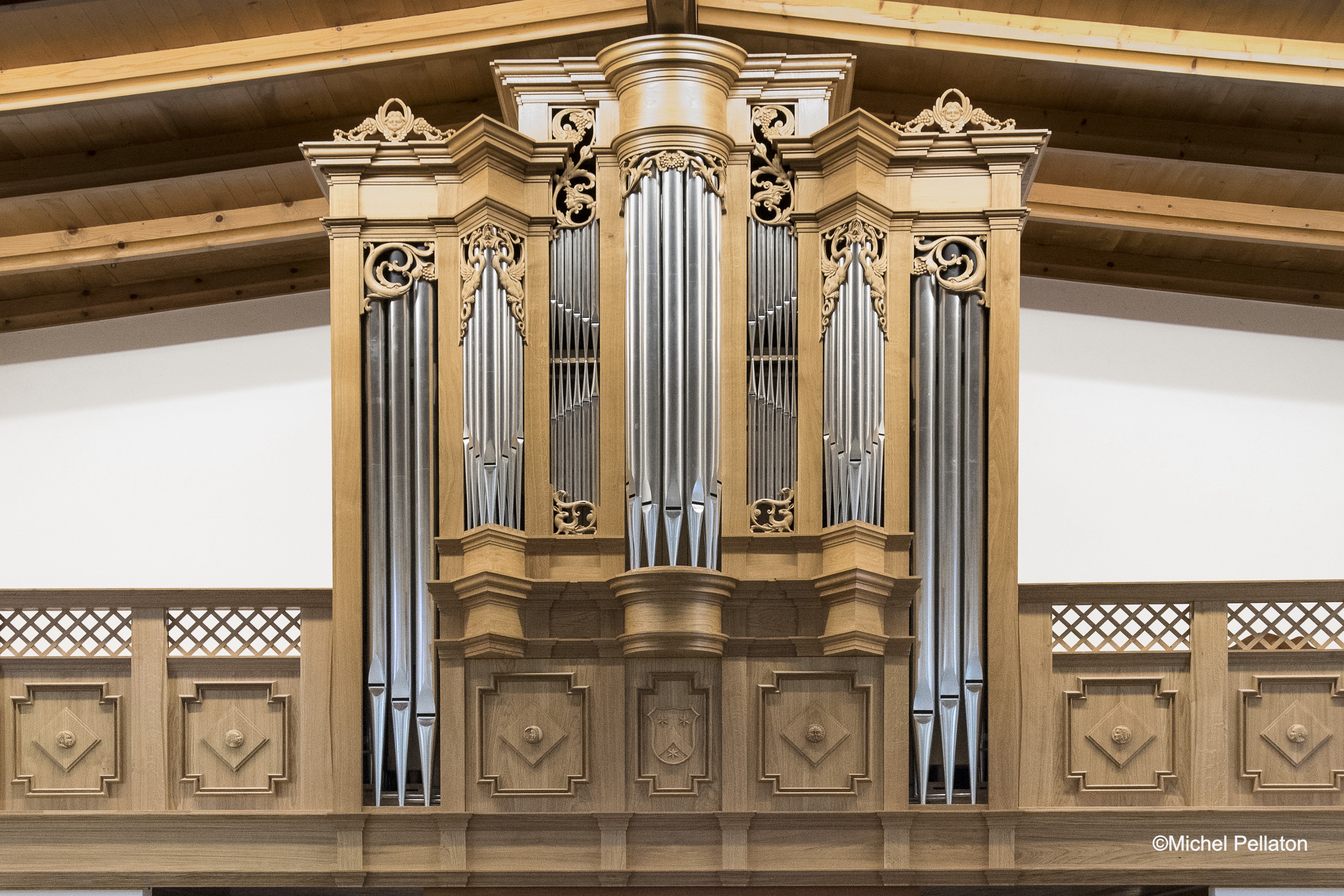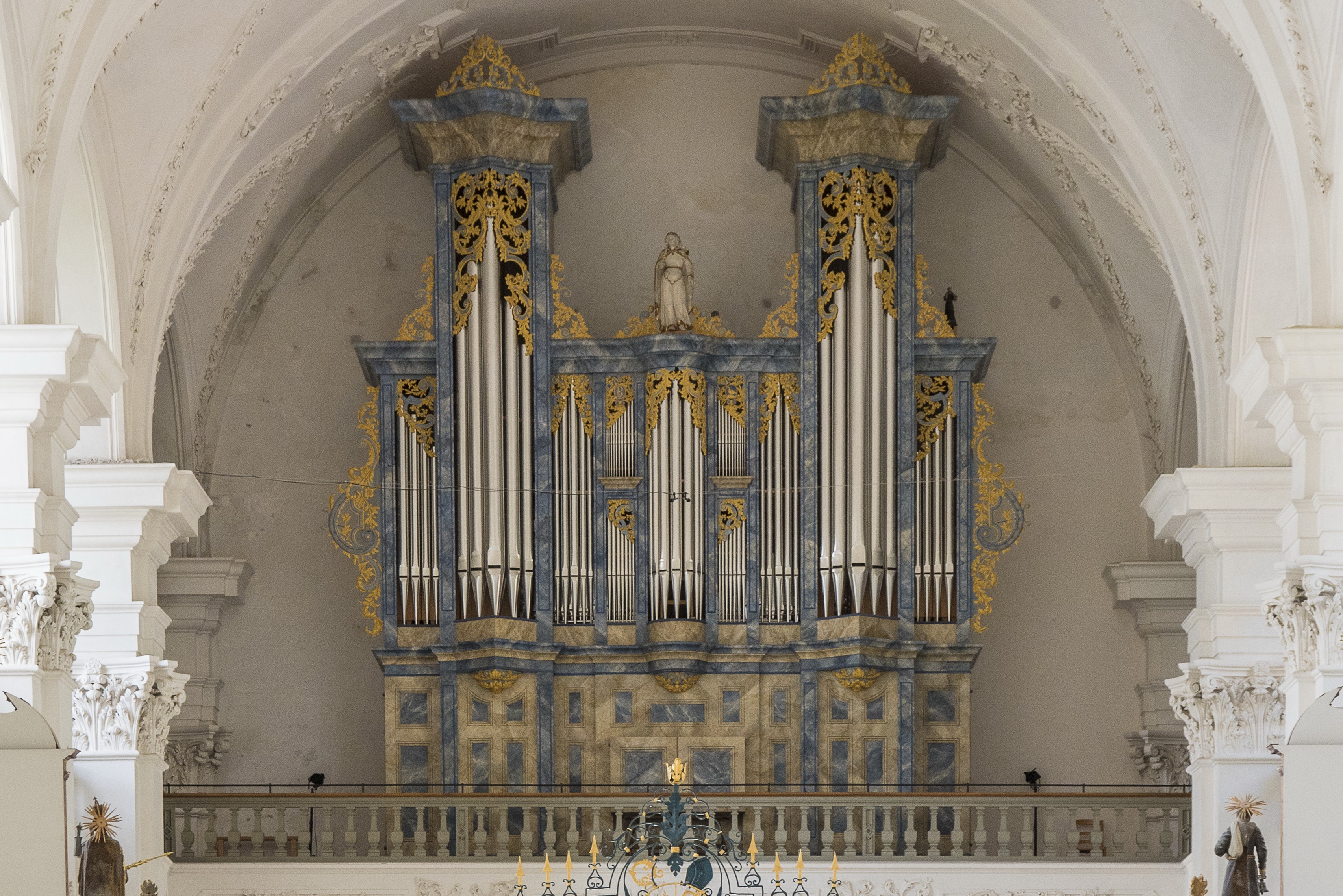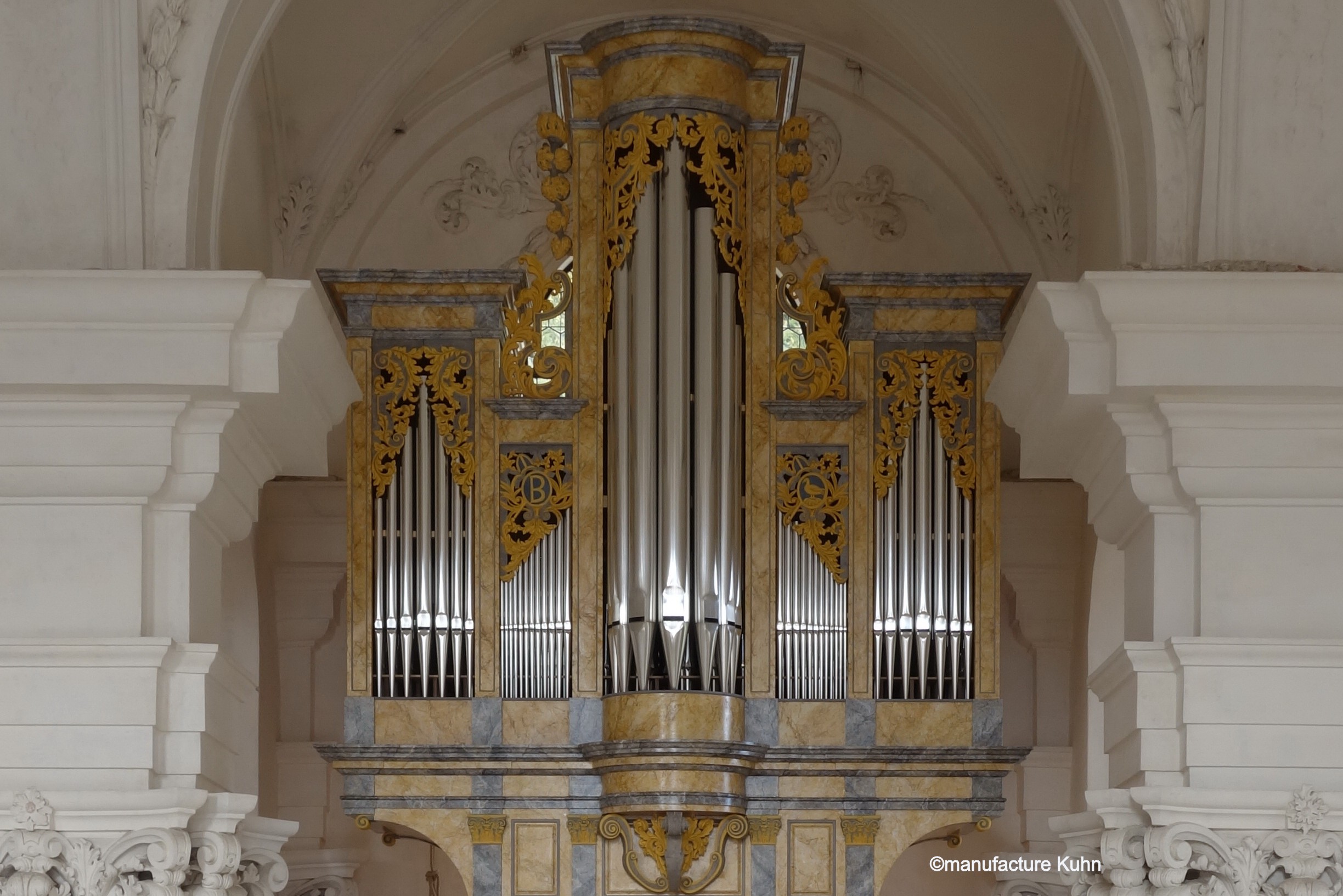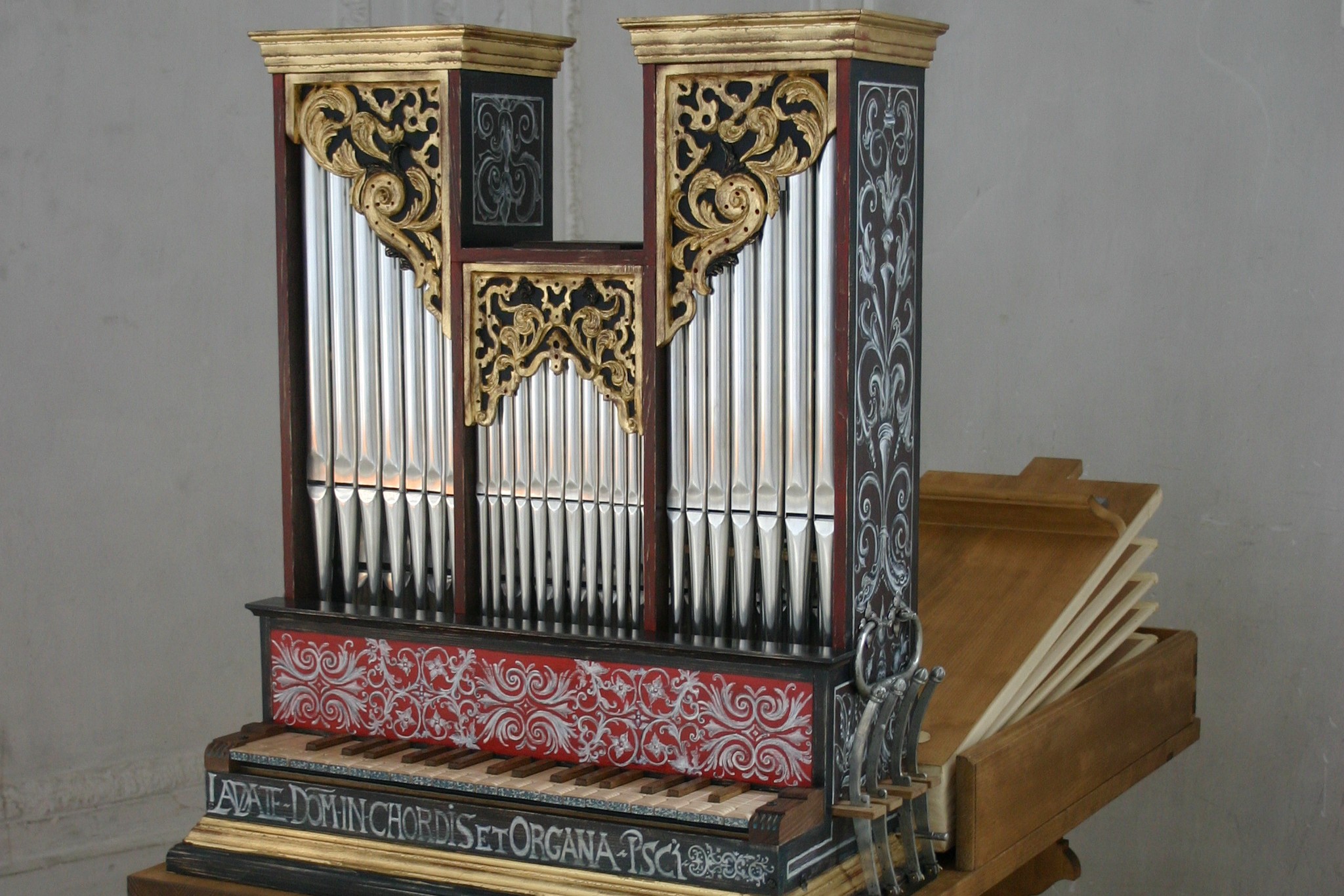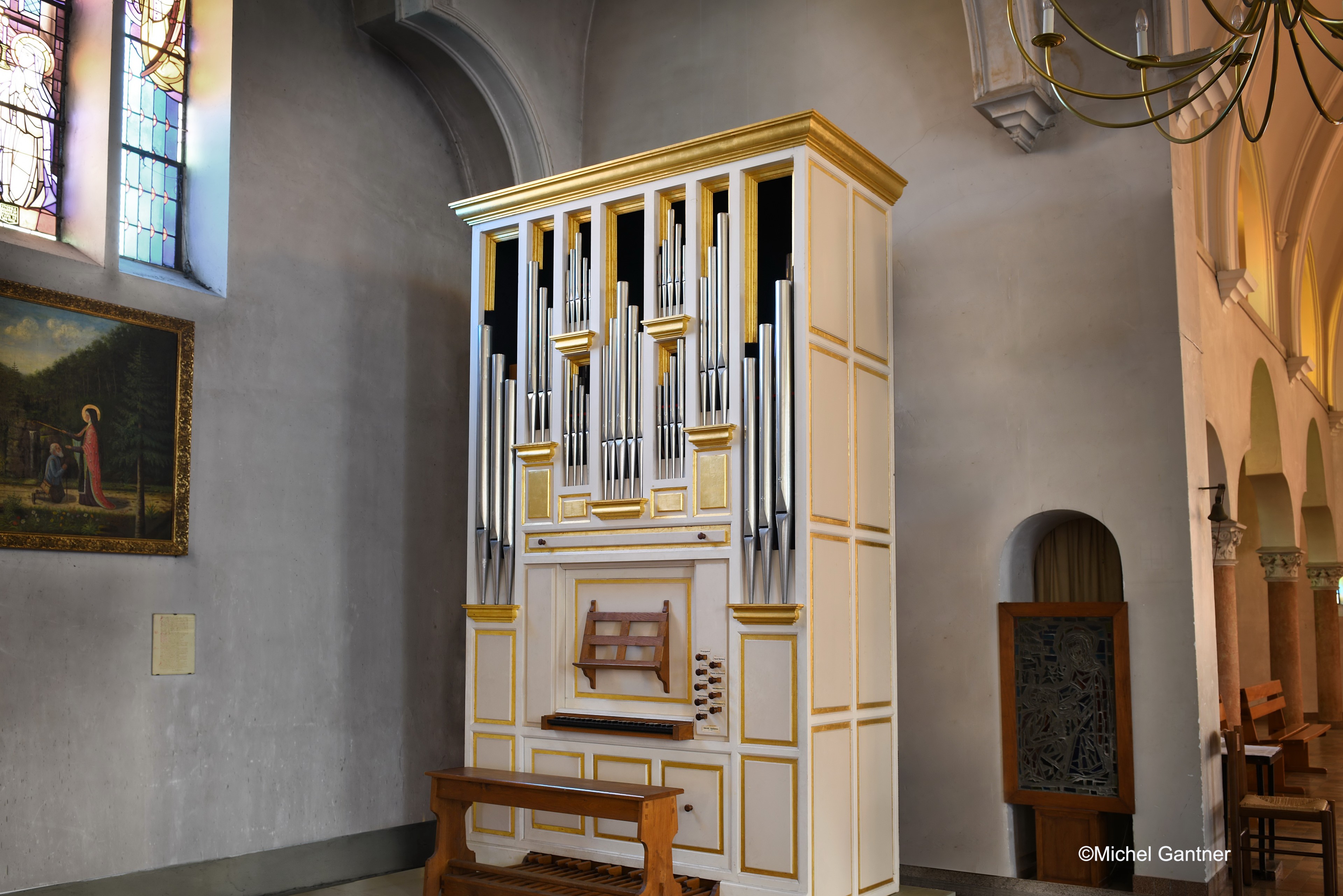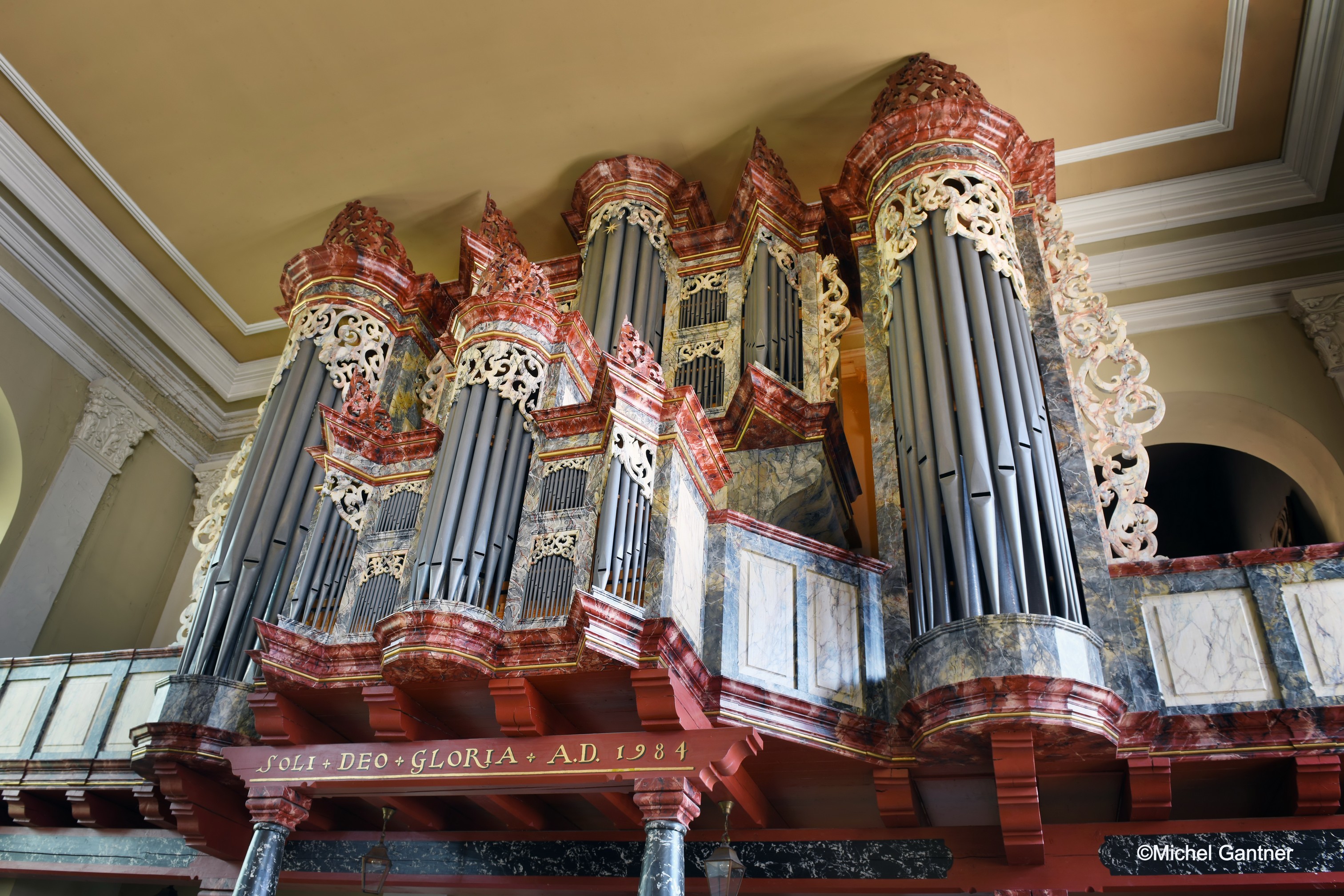Saxon Organ in Porrentruy
Central-Germany style at Jesuits-Church - Jürgen AHREND workshop
The wishes expressed by the local officials and the handsome decorations of the Jesuit church prompted me to choose a historical façade – a model by Gottfried Silbermann. The fact that up to then no organ builder had ever attempted an integral copy of these beautiful organ cases was a further major incentive. The goal of my research and efforts would be to carry out the whole project “in the manner of Gottfried Silbermann”.
For the connoisseur, the Silbermann organ has, since its beginnings in the middle of the eighteenth century, embodied an instrument of extraordinary quality. The amateur will admire the case and its different parts, perhaps even observing the bellows placed in the tower or under the roof. And for the organist, it is the assurance of simple handling and a natural arrangement of the stop knobs. Another concern of this great craftsman was to always limit himself to the essential. The pedalboards thus never extend above c’, which means two windchests with twelve notes each.
As for the listeners, they particularly admire the quality of the sound, of which the beauty of the tin principals, the transparency of the plenum, the clarity of the flutes and the firmness of the basses are only a few aspects.
In comparison with North-German organs, a few significant differences are worth mentioning: whereas Arp Schnitger tended to use several cases, often of modest dimensions, Silbermann enclosed all the pipework in a single large case; he never has a Rückpositiv, and only rarely does he resort for the pedal pipes to turrets that would favour the display of solo stops. The arrangement of the basses in the back of the case lends a rich, balanced presence to this foundation of the sound edifice.
Silbermann replaced the numerous reed stops of the Northern masters by a flawless combination of simple mutations. Finally, an important feature is that this unique resource allows the organist to use the plenum to render the polyphony one encounters throughout Bach’s organ works.
Jürgen Ahrend, 1985
Video design
